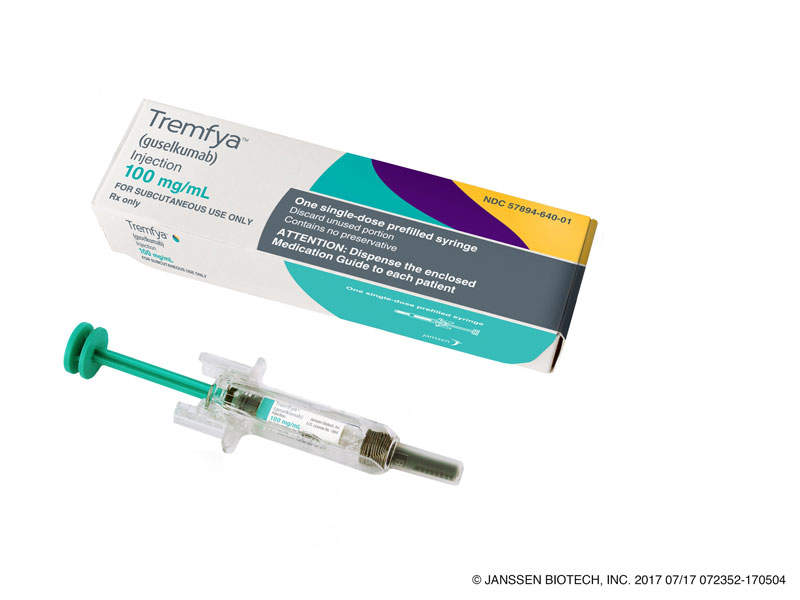Tremfya and Cosentyx for Psoriasis Treatment
Data from the Phase III ECLIPSE head-to-head trial for Johnson & Johnson’s (J&J) interleukin 23 (IL-23) inhibitor Tremfya (guselkumab) in psoriasis patients showed that Tremfya was more effective than Novartis’ Cosentyx (secukinumab) at reducing the severity and area of psoriatic lesions. GlobalData expects Tremfya to steal patient share from Cosentyx, with the potential for IL-23 inhibitors to surpass patient share and sales of IL-17 inhibitors by 2027 despite entering the psoriasis market later.
Data from J&J’s trial showed that 84.5% of patients treated with Tremfya, after 48 weeks of treatment, had 90% clearance in psoriatic lesions, whereas 70% of patients treated with Cosentyx had the same level of lesion clearance. According to GlobalData’s upcoming report, Plaque Psoriasis: Global Drug Forecast and Market Analysis to 2027, Cosentyx is anticipated to garner sales of $1.2B in 2018 compared to an estimated $476.8M generated by Tremfya. Cosentyx is a long-established drug in the psoriasis market and launched in 2015, which has given it an advantage in attaining a larger patient share compared to Tremfya, which launched in 2017. However, based on the recent data published by J&J, an increasing number of patients may now be administered Tremfya due to its long-term efficacy, which could severely impact sales of Cosentyx.
In psoriasis patients, Tremfya is administered every six weeks, compared to Cosentyx, which is administered every four weeks. The reduced frequency of administration of Tremfya could make it a highly favourable treatment option for prescribing physicians, dermatologists, and patients. That being said, the annual cost of therapy of Tremfya in the US is approximately $76,185, compared to $61,261 for Cosentyx. Even though the annual cost of therapy of Tremfya is higher compared to Cosentyx, the reduced frequency of administration and higher efficacy could make it an increasingly attractive treatment option.
The psoriasis market is dynamic and heavily saturated with a number of biologics within the anti-TNF, IL-12/23, IL-23, and IL-17 classes. In addition to numerous marketed biologics, AbbVie’s risankizumab and Eli Lilly’s mirikizumab are IL-23 biologics that are anticipated to launch in the US, in 2020 and 2021, respectively. Additionally, UCB’s bimekizumab, an IL-17 biologic, is anticipated to launch in 2020 in the US. With the launch of these drugs there will be a total of nine biologics within the IL-12/23, IL-23, and IL-17 classes, making the psoriasis market heavily saturated and fiercely competitive. GlobalData anticipates that the combined sales of IL-12/23, IL-23, and IL-17 biologics will garner sales of $8.2B in the 7MM by 2027, which accounts for 33.8% of the global revenue of psoriasis drug sales.
Overall, head-to-head trials of this nature will aid prescribing physicians and dermatologists in deciding which specific biologics to use for individualised treatment of psoriasis, considering the long-term benefits to patients. Furthermore, studies of this nature will bolster Tremfya’s position in the psoriasis market and give it a much-needed boost, allowing IL-23s to surpass IL-17s in the psoriasis market. With this in mind, GlobalData anticipates that IL-23 biologic sales will generate $4.7B in 2027, whereas IL-17 biologics are forecast to garner sales of $3.4B in the psoriasis market.

US Tariffs are shifting - will you react or anticipate?
Don’t let policy changes catch you off guard. Stay proactive with real-time data and expert analysis.
By GlobalData




